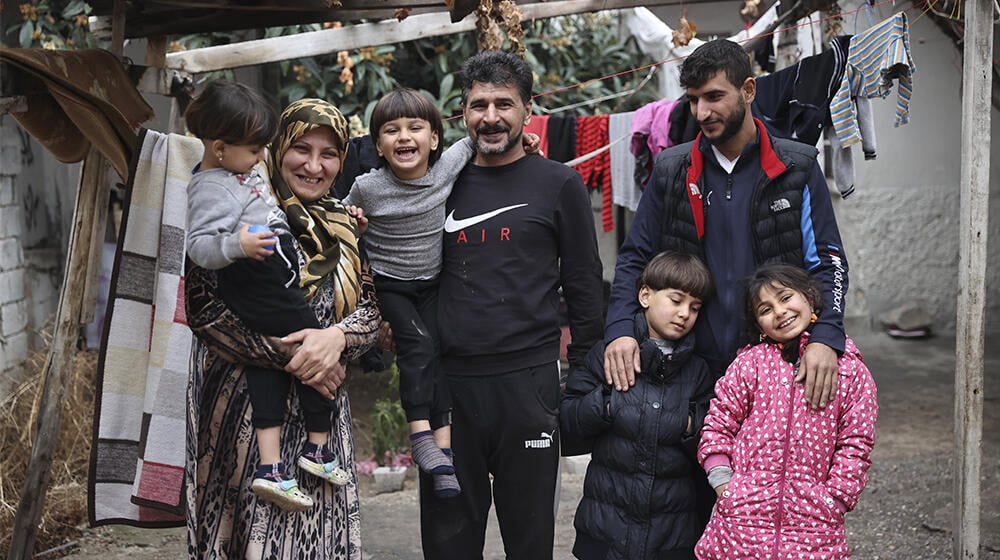Written by UNFPA Türkiye on Nov. 14, 2024
Ankara, Türkiye - The climate crisis is impacting all dimensions of demography, fertility migration and mortality. Fertility includes Reproductive capacity and people’s desired fertility based on what the future looks like is negatively impacted by the climate crisis. The United Nations Population Fund (UNFPA) encourages climate action so that individuals and couples can realize their desired family size without fear of climate change.
Recent scientific researches show threats and negative impacts of climate change on reproductive health and reproductive choice: It lowers fertility aspirations, causes difficulties in labor, and increases the risk of miscarriage. Women exposed to an increase in ambient temperature of 1°C in the week before delivery have a 6% greater likelihood of stillbirth. Moreover, climate-related crises interrupt the delivery of health services including safe abortion and essential commodities of reproductive health including contraceptives and medicine, causing systemic obstacles.
Environmental changes associated with climate change such as air pollution, wildfires, heat stress, floods, toxic chemicals and vector-borne diseases impact male and female fertility as well as newborn health outcomes. Increasing and intensifying heat waves affects the probability of getting pregnant, possibly through heat effects on male fertility.
Climate change not only poses a threat to the anatomical aspect of fertility but also to the mental perspective. People, particularly the youth, have immense anxiety over the future of the planet. For instance, a study conducted in 18 African countries found that women exposed to abnormal environmental conditions were less likely to desire children. People believe that the damage to the environment is too big. They feel insecure about the future and are hesitant to have children. Similar to the regional trend, the fertility rate in Türkiye dropped from 2.38 in the year 2001 to 1,51 in 2023. Specific research on the influence of climate change on fertility desires is not available for Türkiye and would be an important area of study.
Climate change also impacts mortality directly. The climate crisis is a silent killer. The number of people exposed to extreme heat is growing exponentially due to climate change in all world regions. Extreme heat claimed the lives of 489.000 people each year between 2000 and 2019. Between the years 2000–2004 and 2017–2021, heat-related mortality for people over 65 years of age increased by approximately 85%. Between 2030 and 2050, 5 million people may die because of extreme heat. (WHO, 2024)
Prevailing pessimism, anxiety and the trend of falling fertility rates can be reversed only through a global cooperation in climate action. UNFPA acknowledges that climate action is imperative to provide people with a healthy and safe environment that will also allow them to realise their desired family size. It is working with governments and key actors in the design of people-centered climate change solutions to overcome the most severe effects and mitigate the intensification of the climate crisis, and offers comprehensive roadmaps to flip the script:
- Sexual and reproductive health (SRHR) should be an essential aspect of climate action. Disproportionate impacts women and girls are suffering underline the need to integrate SRHR and women’s empowerment into responses to the climate crisis.
- An explicit mention of SRHR should be included in countries’ climate action policies on health, also known as NDCs, which is essential for women and young people.
- Women and youth have less economic, political and legal power and are less able to cope with the disproportionate climate effects. Hence, increasing the representation of women and youth in climate decision-making is imperative. Women and young people can spearhead transformative change and have a sense to have control over their futures, which could eliminate their anxiety, and allow them to realise desired fertility levels.
- Governments, the international community and all key actors should accelerate progress in strengthening health systems, adopting universal health coverage, and creating climate-resilient health and social protection systems. This is a key element in overcoming the climate impacts on chronic diseases, pregnancies, and children and older persons’ health.
- Food waste must be eliminated to mitigate climate change. Our food systems account for 70% of the water extracted from nature, while 19% of the world’s food is wasted. Achieving a zero-waste lifestyle through behavioral change is needed for transformative change. Governments, private sector, and individuals can be a driving force of this change by creating and joining campaigns to raise awareness about the negative effects of food waste on the environment, climate and inequalities.
- The world needs a shared global response to overcome the climate crisis, which revealed the engulfing inequalities among our societies and the growing danger threatening our only planet.
UNFPA is committed to continue collaborating with governments and other partners to strengthen their efforts in climate action while offering long-lasting solutions that strengthen the demographic resilience of societies.


